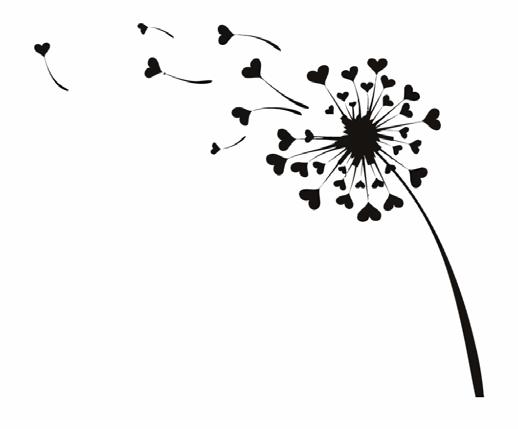
4 minute read
Plant Donations Needed
garden team
by Susan AndrewsDonations Desired!
Ready for growing season? The Co-op Garden Team
is up and running and getting ready for spring! This Member-Owner team is responsible for planting and maintaining gardens surrounding our Watervliet Avenue store. This year they are requesting native plant donations (see list below).
The team’s overarching design goal is to create a natural garden teeming with diversity with plants that work well together and display well visually in all seasons, including winter. The plants should have great structure, interesting foliage, and long-lasting seed heads. Most important, plants should provide great habitat for birds, bees, and other small animals, and serve as host plants and nectar sources for native pollinators, including butterflies (see beekeeping article, page 7). The focus is on native plants to showcase their beauty and value, and on plants suited to poor soil conditions, which don’t require much watering once established.
Our gardens are loosely modeled after the famous High Line elevated gardens in New York City. Inspired by the wild seeded landscape left after a train track was abandoned, the High Line gardens encourage natural growth by ensuring that all plantings re-create the original meadows. The High Line offers visitors a break from the chaotic city streets, providing an opportunity to experience an elevated space with uninterrupted views of the Hudson River and the city skyline. Similarly, the Co-op wants to provide a reprieve from the city’s noise and bustle.
How to Help:
Below appears a list of species especially sought by our Coop Garden Team. You can help by donating extra plants—and their seeds—as you clean up your garden this year. Please do not bring donations directly to our Plants Department because the Garden Team and the Plants Department work independently of each other. (The Plants Department will not have space to hold your donations for the Garden Team; and your much-appreciated donations may not live if you just leave them on the ground in/near the garden beds). Instead, either drop off contributions at Honest Weight’s outdoor patio 9am-12noon, Sat. April 24; or contact Paul W. at 347-837-5578 or lazercut@gmail. com. Subsequent Saturday dropoffs are also possible.
Plant/Seed
Donation List:
Achillea filipendulina (yarrow, more long-lived). Not native but a great pollinator.
Alchemilla mollis (Lady’s Mantle). Not native but a good, long-lived, and beautiful ground cover.
Amsonia hubrichtii (the Hubricht’s bluestar). Native, long-lived, pollinator species. Amsonia ‘Blue Ice’ or any other short Amsonia (3 feet or shorter). Native pollinator species. Asclepias tuberosa (Butterfly Weed). Seeds also welcome. Native pollinator magnet. Aster (any type 3 feet or shorter). Great varieties include ‘Bluebird,’ ‘Purple Dome,’ and ‘Vibrant Dome.’ Native pollinator magnet. Boltonia asteroides (False Aster) (any variety). Native pollinator species. Coreopsis (Tickseed) (any variety or color). Species C. verticillata or C. rosea are particularly nice. Native pollinator species. Echinacea (any type). Native pollinator magnet. Eupatorium coelestinum (Hardy Ageratum). Native, low-growing, fall-blooming pollinator species. Eupatorium ‘Little Joe’ (dwarf Joe Pye Weed) (the taller varieties of Joe Pye are too tall). Native pollinator magnet. Geranium sanguineum (perennial Geranium). Not native but a good pollinator species, good in dry soil and very long-lived. Geum triflorum (Prairie Smoke). Gorgeous native spring wildflower for full sun and dry soil. Helenium autumnale (Sneezeweed) (any variety). Native pollinator species. Heuchera villosa (Maple-leaved Alumroot). Native ground cover. Blooms in August with coneflowers. Lavandula (Lavender) (any kind). Not native but a great ground cover and happy at the Co-op. Liatris spicata (Blazing Star) (any variety). Native pollinator species. Lupinus perennis (Native Blue Lupine). Please only this local native that grows in the Pine Bush and is the host plant for the Karner Blue butterfly. Seeds also very welcome. Mertensia virginica (Virginia Bluebells). Native spring wildflower. Monarda (Bee Balm) (any genus and variety, and any color except red). ‘Raspberry Wine’ a particularly good variety for us. Native pollinator magnet. Origanum (Oregano) (any type). Not native but great edger for high-traffic areas. Phlox paniculata (Summer Phlox) (any variety or color). Native pollinator species. Phlox subulata (Moss Pink) (any variety or color). Native source of great spring color. Pycnanthemum muticum (Mountain Mint). Native pollinator plant, long season of interest. Rudbeckia fulgida ‘Goldsturm’ (Black-eyed Susan ‘Goldsturm’). Native pollinator magnet; beautiful black seed heads in winter. We need lots of this! Sedum ‘Autumn Joy’ or ‘Autumn Fire.’ Not native but a good pollinator species and great fall and winter interest. Sedum ternatum (Sedum) (any type 1 foot or shorter, creeping and “steppable” varieties especially desirable). Sedum is extremely valuable as ground cover in high-traffic areas. The native species, Sedum ternatum, is especially desirable. Thymus (Thyme) (any type; creeping especially desirable). Not native but great edger and ground cover in high-traffic areas. Tradescantia virginiana ‘Sweet Kate’ (Spiderwort ‘Sweet Kate’). Other spiderworts are a bit too big and floppy for us (too high maintenance).
This list can also serve as a resource for planning a native, low-maintenance, pollinator-friendly garden in a sunny, dry location.



